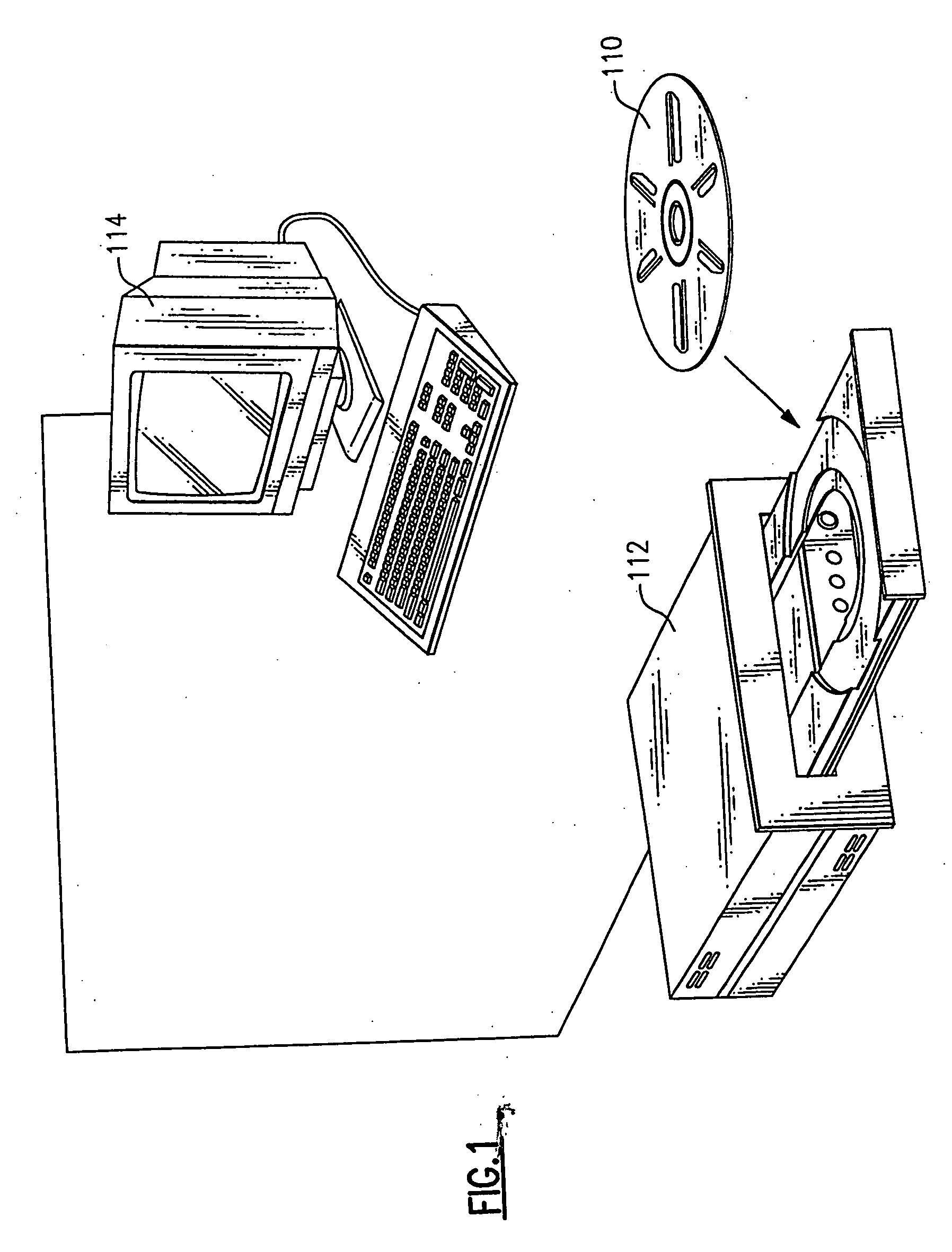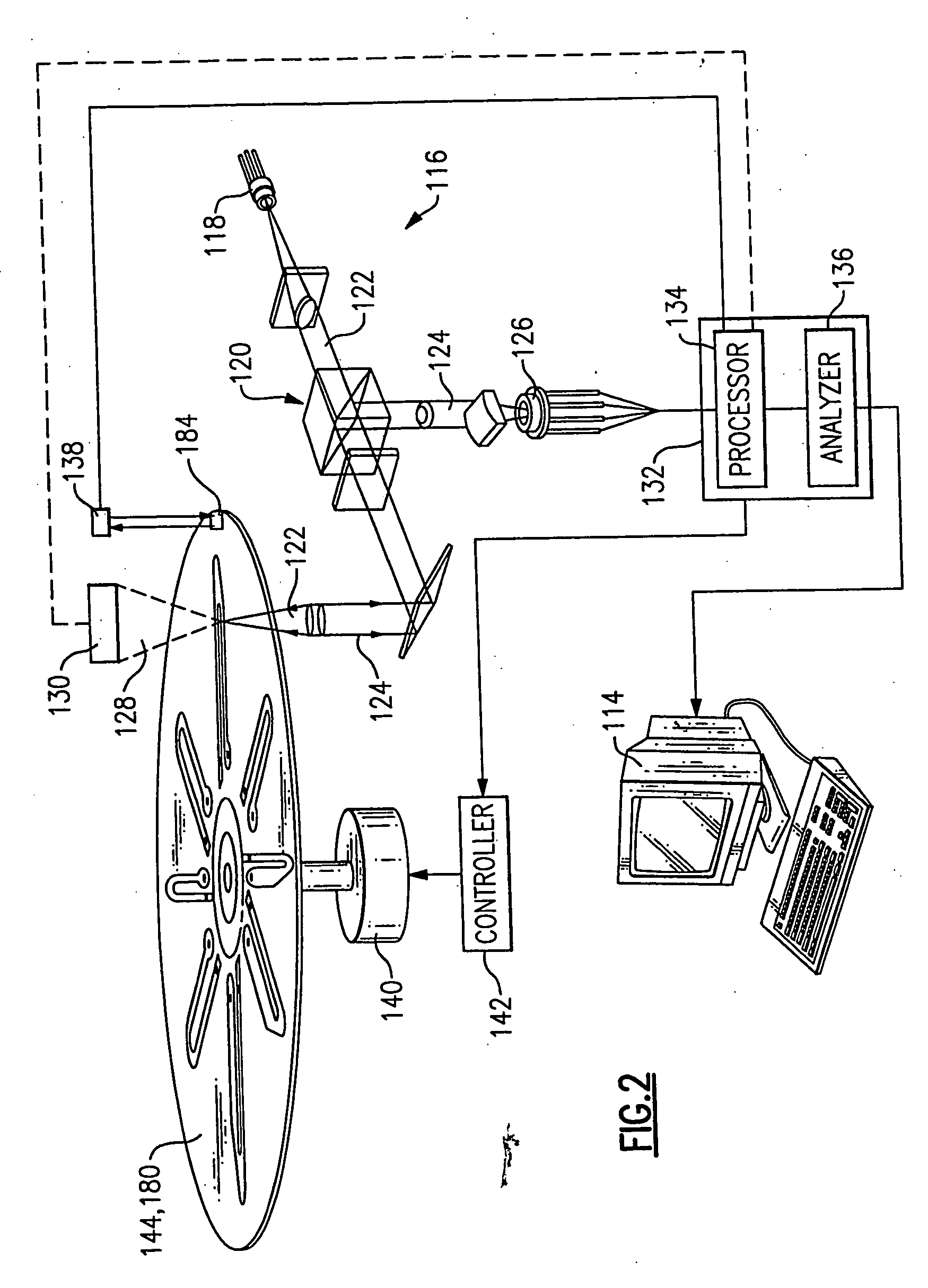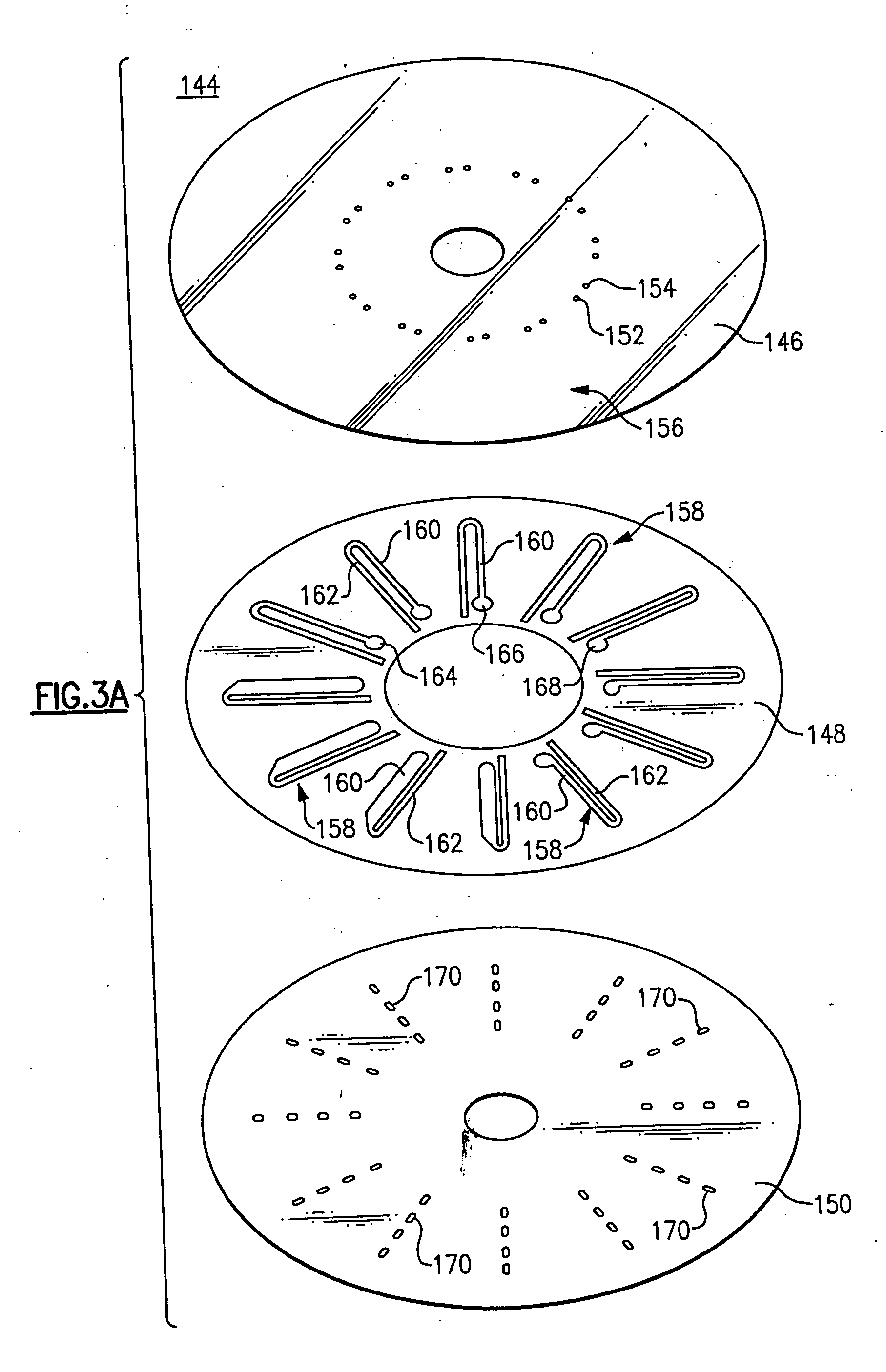Use of restriction enzymes and other chemical methods to decrease non-specific binding in dual bead assays and related bio-discs, methods, and system apparatus for detecting medical targets
a technology of restriction enzymes and enzymes, applied in the field of optical biodiscs, optical biodiscs, medical cds, can solve the problems of not being used by the end user, not having very specialized expertise, and expensive equipment, etc., and achieves the effects of reducing non-specific binding, facilitating separation of reporter beads released from capture beads, and reducing non-specific binding
- Summary
- Abstract
- Description
- Claims
- Application Information
AI Technical Summary
Benefits of technology
Problems solved by technology
Method used
Image
Examples
example 1
[0290] The two-step hybridization method demonstrated in FIGS. 12A-1 and 12A-2 was used in performing the dual bead assay of this example.
A. Dual Bead Assay
[0291] In this example, the dual assay in carried out to detect the gene sequence DYS that is present in male but not in female. The assay is comprised of 3μ magnetic and capture beads coated with covalently attached capture or transport probe; 2.1μ fluorescent reporter beads coated with a covalently attached sequence specific for the DYS gene, and target DNA molecule containing DYS sequences. The target DNA is a synthetic 80 oligonucleotide sequence. The transport probe and reporter probes are 40 nucleotides in length and are complementary to DYS sequence but not to each other.
[0292] The specific methodology employed to prepare the assay involved treating 1×107 capture beads and 2×107 reporter beads in 100 microgram per milliliter Salmon Sperm DNA for 1 hr. at room temperature. This pretreatment will reduce non-covalent bind...
example 2
A. Dual Bead Assay Multiplexing
[0298] In this example, the dual bead assay is carried out to detect two DNA targets simultaneously. The assay is comprised of 3μ magnetic capture bead. One population of the magnetic capture bead is coated with capture or transport probes 1 which are complementary to the DNA target 1, another population of magnetic capture beads is coated with capture or transport probes 2 which are complementary to the DNA target 2. Alternatively two different types of magnetic capture beads may be used. There are two distinct types of reporter beads in the assay. The two types may differ by chemical composition (for example Silica and Polystyrene) and / or by size. Various combinations of beads that may be used in a multiplex dual bead assay format are depicted in FIG. 32. One type of reporter bead is coated with reporter probes 1, which are complementary to the DNA target 1. The other reporter beads are coated with reporter probes 2, which are complementary to the ...
example 3
[0305] After formation of the dual bead complexes, as discussed in connection with FIG. 12A-1 the reporter beads can be separated from the capture beads in a DNA dependent procedure. The dual bead complexes are subjected to DNAases (enzymes that specifically cut DNA). This treatment separates the reporter beads from the capture beads by cutting the DNA that holds them together. Thus, the non-target mediated dual beads will not be affected. The reporter beads that are released after the DNAse treatment are indicative of the amount of target DNA present in the sample. In this experiment, the DNAseI effect in a dual bead assay was evaluated.
A. Dual Bead Assay
[0306] The dual bead assay was carried out as described previously in Example 1, Part A. Briefly, the assay is comprised of 3 μm magnetic capture beads (Spherotech, Libertyville, Ill.) coated with covalently attached transport probes; 2.1 μm fluorescent reporter beads (Molecular Probes, Eugene, Oreg.) coated with a covalently at...
PUM
 Login to View More
Login to View More Abstract
Description
Claims
Application Information
 Login to View More
Login to View More - R&D
- Intellectual Property
- Life Sciences
- Materials
- Tech Scout
- Unparalleled Data Quality
- Higher Quality Content
- 60% Fewer Hallucinations
Browse by: Latest US Patents, China's latest patents, Technical Efficacy Thesaurus, Application Domain, Technology Topic, Popular Technical Reports.
© 2025 PatSnap. All rights reserved.Legal|Privacy policy|Modern Slavery Act Transparency Statement|Sitemap|About US| Contact US: help@patsnap.com



